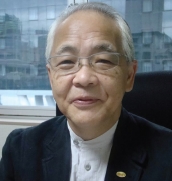
일본은 2010년을‘일본 MICE의 해’로 지정하며 산업의 경제적 파급 효과 및 외화 수입원으로써 MICE산업의 중요성을 인식하고 있다. 기존의 일본은 견실한 제조업을 바탕으로 한 내수경제 중심이었지만, 해외 바이어 및 외국인 관광객 유치를 통한 경제적 파급효과에 초점을 맞추며 제2의 경제성장 핵심 동력으로MICE 산업을 선정하였다. 시설 뿐 아니라, 정책, 규정, 절차 간소화 등의 변화를 통해 MICE산업의 성장을 도모하고 있으며, MICE 산업의 전문가 및 인력 양성에 초점을 맞추어 정부 및 지자체, 핵심 인력들이함께 노력하고 있다.
본 지에서는 최근 MICE산업 육성에 박차를 가하고있는 일본의 MICE산업의 발전전략과 미래방향을MPI(Meeting Professionals International)의 일본지부 대표를 맡고 있는 신아사이(Shin Asai) 대표로부터 들어보고자 한다. 신아사이 씨는 하드웨어(Hardware), 소프트웨어(Software), 휴먼(Human)의관점에서 일본 MICE산업의 과거와 현재를 분석하고있으며, 2010년‘일본 MICE 해’를 경험하며 2011년을 맞이하고 있는 일본 MICE산업의 미래방향성을 제안하고 있다.
[주요 이력사항]
 신 아사이(Shin Asai) 대표는 도쿄에서 태어나고 자랐으며, 도쿄에 위치한 릿쿄(Rikkio) 대학교에서 관광사회학 학위를 받았다. 대학 졸업 후, 그는 이탈리아에서 미팅 플래너로써 처음으로 사회생활을 시작하였으며, 이후 약 30년간 미국의 MICE·호텔·항공·관광분야에서 다양한 포지션을 경험하며 핵심 인력으로 성장하였다. 2003년부터 MPI 일본지부 대표로 활동을하고 있으며, 2005년 일본 MICE 산업 발전에 초점을맞춘 MICE Plus 연구원을 설립하였다.
신 아사이(Shin Asai) 대표는 도쿄에서 태어나고 자랐으며, 도쿄에 위치한 릿쿄(Rikkio) 대학교에서 관광사회학 학위를 받았다. 대학 졸업 후, 그는 이탈리아에서 미팅 플래너로써 처음으로 사회생활을 시작하였으며, 이후 약 30년간 미국의 MICE·호텔·항공·관광분야에서 다양한 포지션을 경험하며 핵심 인력으로 성장하였다. 2003년부터 MPI 일본지부 대표로 활동을하고 있으며, 2005년 일본 MICE 산업 발전에 초점을맞춘 MICE Plus 연구원을 설립하였다.
신아사이(Shin Asai)
MPI 일본지부 대표
2010년‘일본 MICE의 해’- 변화의 시기
2010년 4월 28일 일본 관광청(Japan TourismAgency)이발표한대언론공식발표문첫장을보면일본의MICE산업은 성장동력을 갖춘 산업으로 날개짓을 시작했다고명시하고있다. 현재일본정부는MICE산업의발전에초점을 맞춰 정책적 노력을 단계별로 추진하고 있으며, 마침내 MICE(Meetings, Incentives, Conventions andExhibitions) 산업은 일본경제를 재도약 시키기 위한 핵심적 요소로써 일본 정책입안자들의 관심을 이끌어냈다. 아직 MICE 용어가 널리 사용되고 있지 않지만, 2010년을‘일본MICE의해’로지정한것자체가일본MICE 산업에있어서는확실하고도큰변화였다.
이러한결정은일본관광청의갈망인3,000만외국인관광객 유치와 밀접한 관련이 있다. 관광산업을 경제성장의핵심동력으로 성장시키고자 하는 계획은 2007년 공고되었고, 두 가지 도전적인 목표를 설정하였다.
첫째, 일본을 방문하는 외국인 관광객 수를 1,000만 명 늘리는 것과 둘째,2011년 말까지 일본에서 유치하는 국제회의 개최건수를50%이상 성장시키는 것이다. 2008년 설립된 일본관광청(JTA)은 외국인 관광객 3,000만 명 유치를 위한 프로그램과 충분한 프로모션 활동의 필요성을 인식하게 되었다. 이에 따라 일본관광청은 하드웨어(Hardware)와 소프트웨어(Software) 측면에서일본의장점을대외에적극적으로알리기위한캠페인의일환으로2010년을‘일본MICE의해’로지정하게된것이다.
일본은 왜 MICE산업에 주목하고 있는가? – 변화의 이유
무엇보다 먼저, MICE에 의한 경제적 파급효과가 가장중요한 요인이다. 현재 일본의 인구구조는 출산율 감소로인해 급격한 노령화 단계에 직면해있다. 일본국토교통성(Ministry of Land, Infrastructure, Transport andTourism)의 잠정적인 예측에 따르면, 2050년까지 약3,000만 명 이상의 거주 인구가 감소할 것으로 예상되고있다. 이 수치는 현재 일본 인구의 약 1/3에 해당하는 것이다.
제2차 세계대전 이후, 일본은 강력한 내수 소비가 뒷받침되면서 경제가 안정적으로 운용되었기 때문에 MICE를포함하여 인바운드 관광에 크게 신경쓰지 않았으나, 이제는상황이바뀌고있다. 일본관광청(JTA)에따르면, 일반관광객의 하루 평균 지출액은 127달러에 불과한 반면 MICE방문객의 하루 평균 지출액은 762달러에 달하고 있다. 일본관광청(JTA)의 MICE를 담당하고 있는 국제관광부서 부서장 유이치 다케하라에 부서장은, 일본이MICE산업에 집중해야 하는 이유 중 하나가 회의와 이벤트가 제공하는 중요한 경제적 이익 때문이라고 말한다. MICE와 연관된 상품과 서비스의 판매는 일본전역의 서적 판매규모와 거의유사한 약 10조 2000억(9000억 엔)에 달하는 것으로 일본관광청은평가하고있다.
일본 MICE산업의 과거와 현재
일본 MICE산업의 역사와 발전과정을 3가지 기본적인요소(Hardware, Software, Human) 관점에서 살펴보자.하드웨어(Hardware)는호텔, 컨벤션센터, 회의장, 전시장,공항, 도로, 교통 등을 포함한 기반시설들이다. 소프트웨어(Software)는 마이크로소프트사의 상품을 의미하는 것이아니라 정책, 규칙, 규제, 과정, 절차 등을 의미한다. 휴먼(Human)은 MICE 산업에서 전문적인 상품과 서비스를 제공하는 사람들을 말한다. 일본에서는 제2차 세계대전 이후‘컨벤션‘이라는용어가널리사용되었다.
1954년에 도쿄 히비야(Hibiya) 공원에서 도쿄 자동차쇼가 최초로 개최되었고, 1964년 도쿄 올림픽이 개최되기전까지500개이상의객실을갖춘몇몇호텔들이적절하게개장하여, 국제 컨벤션 및 회의참가자 그룹들을 맞이할 준비를하였다. 모든것을완벽히갖추진않았지만, 1960년대에 기본적인 시설들이 갖춰진 것이다. 일본은 대부분 도쿄와 교토에서 국제 컨벤션 및 회의참가자 그룹들을 유치하기 시작하였다.
점차 국제컨벤션 및 회의참가자 그룹이 증가하게 되었고, 전문회의기획사(PCO)라는 인적요소(Human factor)도 잘 자리잡게 되었다. 1994년 총 45개의 도시(현재 51개)가 국제 관광컨벤션도시로 승인되었고,그 도시에 컨벤션뷰로가 설립되었다. 동시에, 컨벤션센터를 비롯한 많은 회의 및 전시시설들이 지방자치단체에 의해 건립되었으나 아쉽게도 대다수 시설들의 목표대상은(국제컨벤션 및 회의가 아닌) 국내컨벤션과 협회회의, 학술회의, 지역모임등과같은일본내부의회의수요였다.
아시아 MICE산업의 미래전략
MICE의정의는특정한목적을위한MICE 행사에모인사람들 사이에서 의사소통을 이끌어내는 것을 의미한다고생각한다. MICE 행사로부터 발생되는 효과는 4가지로 구분되어질수있다.
1) 경제효과 – 소비와 연계되어있는 MICE는 조직의 수입을 신장시킬 수 있다.
2) 정치·외교적 효과 – 국제 컨벤션 학술회의는 지역의 국제적 인지도를 향상시킨다.
3) 사회·문화적 효과 – MICE는 지역사회의 국제화 에 도움이 된다.
4) 관광효과 – MICE는 일본의 국가 이미지와 외국 인 방문객 수를 향상 시킬 수 있다.
결국 MICE는 단지 관광업이 아닌 비즈니스이며, 경제,사회, 문화, 인적가치까지도 자극할 수 있는 추진체이다.아시아뿐만아니라세계적으로진행되고있는MICE 경쟁은 앞으로 더욱 더 치열해질 것이며, 복합휴양시설(Integrated Resort)로 여겨지는 싱가포르 마리나베이샌즈와 같은 새로운 MICE 아이콘이 지구상의 많은 장소에생겨날지도 모른다. 아시아가 경제성장 잠재력이 가장 높은지역이기때문에, 아시아각국가들은중장기전략에기초하여 MICE 인프라를 완벽하게 갖춰야 한다.
또한, 그들이유치하고자하는MICE 비즈니스가무엇인지에맞춰개별전략을 수립하고 실행계획을 발전시켜가야 한다. 중국과같은 새로운 주도 국가들은 과거 일본이 최고 정점을 경험했던 것처럼 다양한 주요 산업에서 진보적인 발전을 경험하게 될 것이다. 실례로, 중국은 이미 아시아 총 전시면적의2/3에해당하는전시장면적을보유하고있다. 전시회는새로운주도국가들에게최우선고려사항이라고생각한다.

일본 MICE 산업 심층분석 및 미래방향
1. 하드웨어(Hardware)
현재까지일본에올인원(All in One) MICE 복합시설은없다. ‘All in One’의 정의는 컨벤션/회의시설, 숙박시설,쇼핑, 레스토랑, 엔터테인먼트 등을 포함한 복합단지와 행사기간 동안 MICE 참가자들에게 주어지는 편안한 환경을제공하는이상적인장소를의미한다.
모든필요한기능을제공하는올인원복합단지는MICE참가자들에게는 없어서는 안 될 필수불가결한 시설인 것이다. 복합휴양시설(Integrated Resort)을 도입하는 것이 일본이계획한바를이룰수있도록하는가장빠른방법일지모른다. 1990년 컨벤션산업을 활성화시키기 위해 많은Hako-monos(일본어로 Hako는 상자를 의미하고 mono는 물건을 의미하는데 이를 종합하면 물건을 담는 상자라는 것으로, 컨벤션센터를 비유적으로 묘사한 것임)가 건설되었고, 이는 장점과 단점이 모두 있었다.
이 중 몇몇은 단지 영화관 스타일로 디자인 되었고, 몇몇은 근처에 숙박시설이부족했고, 또몇몇은이미적자에괴로워하며운영불가능 상태에 빠졌다. 향후 MICE 인프라에 대한 투자는MICE 비즈니즈의메커니즘과트렌드에대한연구및조사과정을 통해 보다 복합적 기능이 가능한 컨셉을 도입하여이루어져야한다.
2. 소프트웨어(Software)
외국인들은 일본을 허가와 자격증의 나라라고 말한다.다시말해, 일본은정책, 규정, 과정, 의사결정에있어유연하지 않다는 것을 의미한다. 일본에서 호텔을 짓기 위해서는 40개 이상의 자격증과 허가가 필요하다고 한다. 국제MICE시장에서 일본의 경쟁력을 향상시키기 위해 효과적인시스템구축은절실하다. 국제적규정과기준에따라시스템을적절하게변화시키며대응해야할것이다.
나는 많은 도시를 방문했고, MICE의 발전을 위해 노력하고 있는 몇몇 경영진들을 만난 적이 있다. 그들의 MICE는 아직 자국 내 학술회의나 협회회의에만 국한되어 있었다. 그들 중 몇몇은 학술회의에 3,000명의 참가자들을 모으기 위해 노력하고 있었으나, 그 지역에 참가자들이 머물수 있는 숙박시설은 오직 200개의 방을 갖춘 시설뿐이었다. 이것은각각의도시들이다른무엇보다우선어떤종류의 MICE가 그들에게 적합한지부터 알아야 한다는 단순한사실을 전달하고 있다.
“세계는 평평하다(The World IsGetting Flat)”의 저자 토마스 프리드먼(ThomasFriedman)이말한것처럼, 프랑스리옹의MICE 그룹들은일본 중형도시들에 좋은 본보기일 수 있으며, 매년 하와이에서 행해지는 인센티브 투어는 오키나와에 좋은 본보기가될 것이다. ‘소프트(Soft)’부문에서 ’개방(Open Sky)의 필요성을 언급한 것은 적절하지 못할지도 모르지만, 그것은자연스럽게정책과규정에연결되어있다.
3. 인적자원(Human Resource)
인적자원 부문에서는 일본에서 MICE행사를 유치하고그러한 제안과 프레젠테이션에서 효과적인 협상을 수행할수 있다는 것을 국제조직에 제안할 수 있는 고도로 숙련된전문가를 절실하게 필요로 하고 있다. 동시에, 국제적MICE 시장에서 장기적인 로비활동이 필요하다. ‘일본MICE 해’의 핵심 추진계획 중 하나는 일본관광청(JTA)과일본정부관광국(JNTO)이 이번 해에 일본을 방문하는MICE 참가자들을 지원하는 업무를 맡고 있는 전문가들의질적 수준 향상을 위한 교육프로그램 운영에 전력투구하는것이다.
더욱이, 일본관광청(JTA)은 자금을 지원하기보다는민간업체의직원들을ICCA, IAPCO, MPI 등과같은국제 MICE기구 교육프로그램 또는 회의에 참가시키는 것을지원하고 있다. 나는 수용 메커니즘 측면에서 일본에 입국하는MICE 방문객을지원하는전문가양성이확실히중요하다고생각하지만, 그보다일본으로MICE 비즈니스를유치해올 수 있는 전문가 양성은 보다 중요하고 시급히 필요한사항이라생각한다.
인적네트워킹 구축과 인적교류 역시 매우 중요하다. 내수소비에 의해 이루어진 강력한 경제에 대해 감사해야 하지만, 과거일본은‘국제화‘된국가로여겨지지않았다. 일본의 기관이나 단체의 국제 MICE협회에 등록현황을 살펴보면, ICCA에 17개 기관이 가입해 있고, MPI 66명, SITE4개기관이다. 미래에는이러한국제MICE협회와더욱긴밀한 관계를 맺고, MICE 시장전문가와 정보, 국제기준과함께성장해야할것이다.
일본 MICE산업의 미래방향
몇몇미국기업에서30년넘는기간동안일해온개인적인 경험에 비추어보면, 일본 MICE의 가장 강력한 셀링포인트는‘전통에입각한환대정신’일것이다. 일본은싱가포르나MICE 비즈니스를유치하기위해새롭고매력적인시설과 관련 콘텐츠를 개발해야하는 다른 신흥국들과는 처한상황이나 환경이 다르다. 그 대신, (역사와 전통을 가지고있는) 일본은현재의매력적인자원을일괄정리하여전세계의MICE 전문가들에게압축된핵심메시지를전달할수있는 메커니즘을 개발해야 할 필요성이 있다. ‘일본 MICE해’의 선전 구호는‘세계의 중심지 일본’을 의미하며 일본이 지식, 정보, 지성, 문화의 중심지 역할을 할 수 있기를기대해 본다. 일본의 독자적인 MICE 상품과 프로그램을개발하는 것은 국제 MICE 시장에서 경쟁력을 확보할 수있는유일한방법이라고생각한다. 일본은MICE 참가자들에게 그들의 기대감을 초월하고 만족시킬 수 있는 데스티네이션이되어야할것이다.
[영문 원문]
The Future of Japan MICE Industry
A land of rising MICE?
On the first page of a press release of April 28, 2010, prepared byJapan Tourism Agency (JTA) ‘The Japan MICE year makes afull-fledged start ‘appeared in the bold letters. Now JapaneseGovernment is stepping up its policy efforts to focus on thedevelopment of MICE.
MICE (meetings, incentives, conventions and exhibitions) finallyhas drawn the attention of Japanese policymakers as importantkey driver to reenergize the economy. It certainly was a bigchange in 2010 in Japan MICE industry, although the term ofMICE has not been widely used in Japan yet.
The decision is closely linked to JTA’s ardent wish which is‘Achievement of 30 Millions Foreign Visitors’. Its original planto grow the tourism business into a key driver of economicgrowth was announced in 2007 and set two challenging goals:increasing the number of foreign visitors to Japan to 10 millionand increasing the number of int’l conferences held in Japan bymore than 50% by the end of 2011. JTA was established in 2008and has figured out the program to increase foreign visitors to 30millions and worked out a good number of promotional activities.JTA has designated 2010 as “Japan MICE Year”as part of itscampaign to appeal Japan’s advantages, in both hardware andsoftware.
Why Japan has started to potentiate MICE segment as one of serious action plans to stimulate inbound business?
First of all, economy effect driven by MICE is the key factor.Japan is now facing the rapid aging of the population resultingfrom the decline in the birthrate. According to the MLIT’s(Ministry of Land, Infrastructure, Transport and Tourism)provisional calculation, it is expected that more than 30 millionsresident populations will be faded away by 2050. The figure isabout one third of the current Japanese population.
Since WorldWar II, Japan has never gotten into crunch mode in payingattention for inbound tourism including MICE as economy hasbeen generally staple, supported by the strong domesticconsumptions. Now the picture is changed. Another provisionalcalculation prepared by the Japan Tourism Agency, theexpenditure per day of a foreign leisure inbound tourist is aboutJPY10, 178 (USD127.00) while its expenditure of a MICE visitorper day is JPY61,000 (USD762.00).
Mr. Yuichi Takehara,Director of Int’l Tourism Relations-in charge for MICE of JTAreported that ‘One reason to pay attention to MICE is thesignificant economic benefits these meetings and events offer.MICE related sales of goods and services are estimated by JTA as\900 billion, roughly the same as over all book sales in Japan.’
Brief History & Background
Let me walk through the past Japan MICE history in view of 3fundamental factors which develop MICE business, they arefirstly hard, secondly software and finally human. Hard is ofcourse infrastructures such as hotels, convention centers,conference halls, exhibition halls, airports, roads, transportations,etc. Software does not mean Microsoft products, instead they arepolicies, rules, regulations, process, procedures, etc. Human arenaturally human beings those who can provide professionalproducts and supports for MICE business. The term of conventionhas been widely used in Japan since World War II.
By 1954, the first Tokyo Motor Show was held at Hibiya Park inTokyo. By the time when Tokyo Olympic game was held in 1964,several hotels in Tokyo which could exceed 500 rooms weretimely open and ready to welcome int’l convention andconference groups. The infrastructures were not fully equippedbut basically prepared in 1960s. and Japan has started to welcomeint’l convention and conference groups to Tokyo and Kyotomostly.
As the number of int’l convention and conference groups hasbeen increased, the professional congress organizers (PCO) havebeen well established as human factor. In 1994, Convention as we say, was put in place and 45 cities (now 51) were approved asInt’l Tourism and Convention cities and convention bureaus havebeen established in those cities.
At the same time, a good numberof conventions, conference and exhibition facilities have beenbuilt by both centers and regional governments. However, mosttargets of those facilities are domestic convention and meetingdemands from association meetings and academic meetings orlocal get-togethers.
Where is Japan MICE heading for in the future?
I believe that MICE means schemes to tap communication amongpeople by bringing them together for MICE events for someparticular purpose. The effects that are generated from organizinga MICE event can be grouped into four categories.
First, economic effect: MICE-related consumptions can boost organizational earnings.
Second, political and diplomat effects: hosting int’l conventions and academic meetings step up the region’s international name recognition.
Third, social and cultural effects: MICE could support internationalize the local community.
Fourth, effects on tourism: MICE events could upgrade Japan’s national image and accelerate the number of foreign visitors to Japan.
Therefore MICE is not just tourism, instead MICE is business andengine to stimulate economy, sociology, culture and even humanvalues. The MICE Competitions, not only within intra-Asia butglobally, is expected to glow, and a lot of new MICE icons, likeSingapore Sands which are considered as integrated resort mightbe coming into existence in the many places on the globe. SinceAsia the most potential area in growing economy, the fullequipments of MICE infrastructure must be completed basedupon middle and long term strategy by each Asian country.
Andeach country has to develop individual strategy and action planbased upon what kind of MICE business they are planning toattract. New leading countries like China will welcome theiradvanced peak in the various fundamental industries as Japan haswelcomed its peak in the past. For instance, it resulted that Chinaalready boasts the tow third of space for exhibitions in Asia. Ithink Exhibition has to be the top priority for those new leadingcountries.
1. Hardware
As of today, there is no all-in-one MICE facilities in Japan. Thedefinition of all-in-one is the ideal venue where MICE visitors aregiven the comfortable environment during a MICE, an event, acomplex, including convention and conference facilities,accommodations, shopping, restaurants, entertainments, etc. Allin-one facilities that can provide all the necessary functions areindispensable for MICE visitors.
A bringing in an integratedresort type might be a shortest way to make it happen in Japan. In1990, a lot of Hako-Monos (Hako is Box while Mono isHardware in Japanese) were constructed in many cities in Japanin order to stimulate convention business, however most of themare swings and roundabouts. Some are just designed for thepurpose of theater-style, some are lacking accommodationsnearby and some are already out of operation or suffering redfigures. In the future, the investments seriously have to researchand study the mechanism of MICE business and trends and buy inmore multi-functional concepts.
2. Software
Foreigners always mention that Japan is the land of authorizationand license. In other word, Japan might not be flexible in policies,rules, processes and decision makings. I once hear that more than40 licenses and authorizations are required to construct a hotel inJapan. It is necessary to build up effective systems to a popularand friendly MICE destination.
To tap Japan’s competitiveness inthe int’l MICE market. It is critical to change the relevant systemsin line with int’l rules and standards. I have visited many localcities and met with several managements those who areresponsible to develop MICE. Most of them are yet chasing domestic academic or association meetings and their MICEdefinition is only limited to those segments. Some of them weretrying to attract 3,000 attendees of academic meetings, but thebiggest accommodation of the area is just 200 rooms. This tells asimple truth, each regional city must first define first what kind ofMICE is best suitable for them.
As Thomas Friedman tells us inhis book “The World Is Getting Flat”, a MICE group to Lyonmight be a good prospect to Japanese Medium city, an IncentiveTour conducting in Hawaii every year might be a prospect toOkinawa. It is probably not appropriate that I refer to thenecessity of ‘Open Sky within Soft’ however it is naturally linkedto policy and rule.
3. Human Resources
As for human resources, it is urgent to train highly skilled expertsand professionals who can propose to int’l organizations that theycan hold MICE in Japan and conduct effective negotiations onsuch proposal and presentation. At the same time, it is necessaryto set long-term lobbying activities in int’l MICE market. As oneof core action plans of ‘Japan MICE year’, the Japan TourismAgency and JNTO (Japan Tourism Organization has gone all outto start several educational programs this year to increase moreprofessionals to support inbound MICE visitors.
Additionally, theJapan Tourism Agency has substitute the fund to support privatesector’s personnel to attend int’l MICE organizations educationaltrainings or meetings, such as ICCA, IAPCO, MPI, etc. I think itis certainly important to develop professionals to supportincoming MICE as acceptance mechanism though. It is criticallyand immediately needed to develop professionals those who canbring MICE business to Japan. As mentioned previously, Worldis getting Flat. For instance, RFPs are directly delivered tovenues, such as hotels, convention centers and conferencefacilities, he or she at venues must be capable to prepareproposals and return them to organizers in few hours.
Networkingand connections are also critical. Thanks to strong economydriven by domestic consumptions, Japan has not consideredinternationalization in the past. Here follows the numbers ofJapanese listed in int’l MICE Associations: ICCA (17organizations), MPI (66 individuals), SITE (4 organizations). Inthe future, it is an urgent issue to connect those int’l MICEassociations to stay close to MICE market intelligence,information and global standard.
Lastly, What is the ideal future of Japan as a MICE DESTINATION?
Through my experience at several US corporations over 30 years,the strongest selling point of Japan MICE is certainly a spirit ofhospitality based upon tradition. Japan is unlike Singapore andother emerging countries those who have to develop the newattractive infrastructures and contents, etc to attract MICEbusiness.
Instead Japan needs to box up current attractiveresources and develop the mechanism how to deliver thosecompressed key messages to right MICE organizers all over theworld. It is not achieved without joint strategical and continuingpromotions by the both public and private sectors. Thecatchphrase for ‘Japan MICE Year’ is “Japan, A GlobalCrossroads,” is, I wish, Japan can play an important role in as acrossroads of knowledge, information, intelligence and culture. Ibelieve that developing Japan solus MICE products and programsis the only way to stay competitive in international MICE market.ROI is now a key word of MICE industry. Japan has to be adestination to meet and exceed the various expectations of MICEorganizers.






